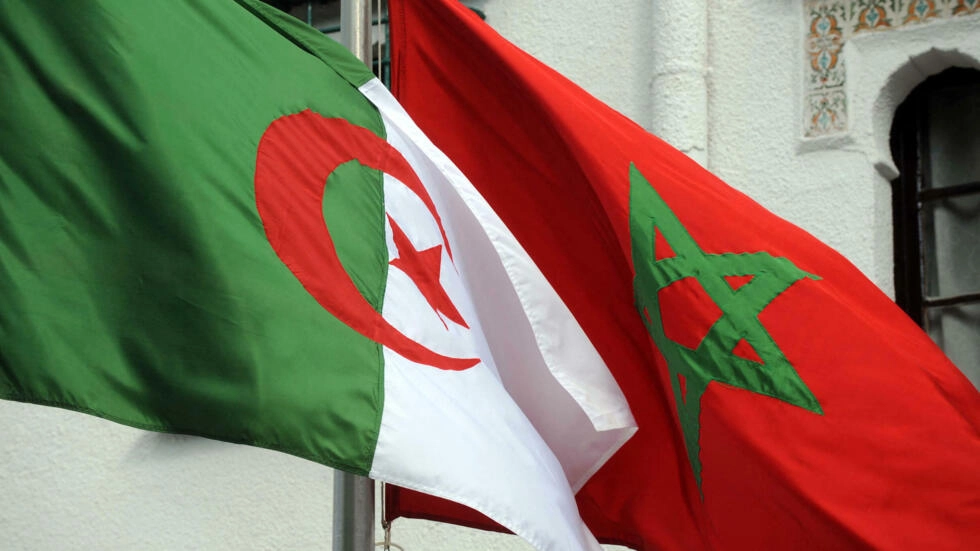The draft finance law for the year 2024 provides details concerning the exemption from income tax for raw milk collection and sales activities. A product whose annual needs are estimated at 4.5 billion liters in Algeria.
To this end, different options are being considered, including an agreement with Qatar for the construction of a farm with more than 10,000 cows.
According to the president of the National Interprofessional Council of the Milk Sector (CNIFL), Azzedine Tamni, Algeria needs two million dairy cows in order to ensure its self-sufficiency in milk.
It was during a forum held during the 2022 International Exhibition of Agriculture, Livestock, and Agro-industries that this professional provided a complete picture of the situation.
According to his remarks reported by the APS agency, Algeria’s needs are currently estimated at 4.5 billion liters of milk per year. With just over 900,000 heads, the dairy herd produces 2.5 billion liters per year. Doubling the number of dairy cows would require more than 200,000 hectares of irrigated hectares to produce fodder.
The finance bill for the year 2024 therefore aims to encourage local milk production. The previous provisions provided for a permanent exemption from income tax. The text indicates that these provisions concerned “consumption as is”.
However, in practice “difficulties of application have arisen, to the extent that the condition of destination for consumption as is constitutes a very restrictive requirement” in the case of collectors of raw milk. In fact, the product of the collection “is intended exclusively for dairies which use it as raw material for the manufacture of other dairy products. »
Also, article 5 of the draft finance law 2024 provides to “remove the condition of destination for consumption as is and to specify the activities concerned by this exemption, namely the activities of sale and collection of milk believed. »
As the article in question states, collectors “play a key role in the development of the breeding and raw milk production sector. » This measure therefore aims to reduce imports of milk powder.
Milk powder versus fresh milk
These imports remain significant. According to the director of veterinary services at the Ministry of Agriculture and Rural Development, Imad Idres: “Algeria imported between 400 and 500,000 tonnes of milk powder in 2020, for a bill of 1.2 billion dollars. »
Imports are carried out by 3 categories of operators according to the same source: “the National Interprofessional Office for Milk and Dairy Products (ONIL) which supplies some 130 private dairies and the 15 public dairies of the Giplait Group, importers-processors and importers-resellers “.
In December 2022, during a meeting with ONIL executives, the Minister of Agriculture and Rural Development, Mohamed Abdelhafid Henni insisted on the need to improve the collection of fresh milk in order to reduce the milk bill. import of powdered milk.
A milk powder used in different ways. Quoted by the APS agency, in February 2022, the CEO of ONIL Khaled Soualmia indicated that the office ensured the availability of milk powder to factories as a supplement to raw milk, but it appeared that many units use it currently as raw material in production.
However, these factories have obligations. According to Khaled Soualmia: “Factories are legally responsible for the collection operation in order to benefit from subsidized milk powder, which requires them to collect the maximum.”
However, not all of the milk produced locally reaches the dairies. There is an informal sector that varies from one wilaya to another, made up of creameries, cafes, and customers.
Studies show that its importance decreases depending on the density of the collection network and the level of technical support put in place by the dairies. Also in order to improve collection, in recent years, the level of premiums has been increased.
The milk production bonus granted to breeders increased from 6 DA/L to 12 DA per liter, the bonus granted to collectors was set at 5 DA/L and that granted to dairies reached 6 DA/L or even 7.5 DA/L L depending on the volume level of milk processed.
For Malik Makhlouf of the University of Tizi-Ouzou and co-author of a study on national dairy policy, “the debate mainly concerns the relative dosage of these different levers and consequently, the definition of its beneficiaries.”
These incentive mechanisms for raw milk producers have had positive effects. Thus in 2021, “the share of collection of this product reached 800 million liters”, indicates Imad Idres, a level that agricultural services are trying to improve since “because annual production is estimated at 3.5 billion liters “.
To this, as with other agricultural products, is added a phenomenon of seasonality: dairies receive more milk in spring than during other times of the year.
Co-author of a study on the Skikda region, academic Karima Zalani notes “a certain concordance between the seasonality of milk deliveries and the distribution of herd calvings. »
A situation linked to highly seasonal fodder production while milk consumption increases significantly at other times of the year, particularly during the month of Ramadan.
Depending on the type of dairy, the collection strategy varies greatly. This is the case in Skikda where there are several collection networks. To the two local dairies, Sahlait and Saplait are added those of Soummam and Danone located in Akbou in the wilaya Bejaïa, a distance of more than 200 kilometers.
These last two dairies are of industrial size with collection and production capacities seven times greater. Karima Zalani notes that: “The small Sahlait and Saplait dairies in Skikda are engaged in the manufacture of fluid milk sold at regulated prices thanks to quotas of subsidized milk powder. However, for the manufacture of dairy products sold at free prices on the market, they use the raw milk that they collect. This explains their low level of intervention in supporting the development of local dairy production. »
For their part, the two industrial dairies depend on raw milk for the manufacture of dairy products (yogurt, dessert cream) sold at free prices.
Also notes the study: “They apply a more engaged strategy with dairy farmers by densifying their collection networks and guaranteeing technical support to build loyalty among farmers and ensure regularity of their supply of raw milk.”
The technicians from these two dairies are interested in farms with large herds. As the study indicates, they spare no effort: technical assistance for the maintenance of milking and refrigeration equipment, technical advice on the conduct of reproduction, feeding, and milking, training organized by zootechnicians and veterinarians employed by the dairy, leasing strategy for the acquisition of pregnant heifers of selected breeds.
In order to improve local production, during a meeting in December 2022, the Minister of Agriculture and Rural Development, Abdelhafid Henni urged ONIL executives to “intensify work on the ground” in order to support breeders.
Since 2015, as part of the Alban project between Algeria and the Brittany region in France, local technical support groups have been set up for breeders and fodder producers in Souk Ahras, Blida, Relizane then in Ghardaia.
Recently in an interview with the media La Patrie News, Abdelhafid Henni reported on the progress of discussions with the Qatari dairy Baladena for the creation of a farm of 10,000 dairy cows in Algeria. A project which should enable the country to become self-sufficient in milk powder.
Qatar has already achieved self-sufficiency in milk, however, Baladna’s facilities locally only have 240 hectares. An insufficient area in a country where it rains only 987 liters of water per square meter to feed 20,000 cows. The explanation lies in the activity of the Hassad Food Fund, an entity created in 2008 with the capital of one billion dollars and which has invested in agriculture.
In a study dating from 2022, Lama Fakih of the University of Beirut notes that the Qatari fund “thus purchases thousands of hectares of arable land in various regions of the world such as Turkey, Ukraine, Brazil, or even Kenya. It is mainly present in Sudan where it has more than 101,171 hectares of land to cultivate.”
This allows the Baladena dairy to be continuously supplied with fodder produced in Sudan and transported by boat to Qatar. In 2021, according to the Knoema site specializing in international trade, 21,596,000 dollars of alfalfa were imported by Qatar, including 7,178,660 dollars from Sudan. This has enabled a daily production of 320,000 liters of milk since 2019.
Algeria’s milk needs are 4.5 billion liters. However, the production of one liter of milk requires one cubic meter of water to produce the fodder necessary for cows.
In Algeria, agricultural services are working on different alternatives. It will therefore remain to find the enormous quantities of water necessary to produce the fodder.














